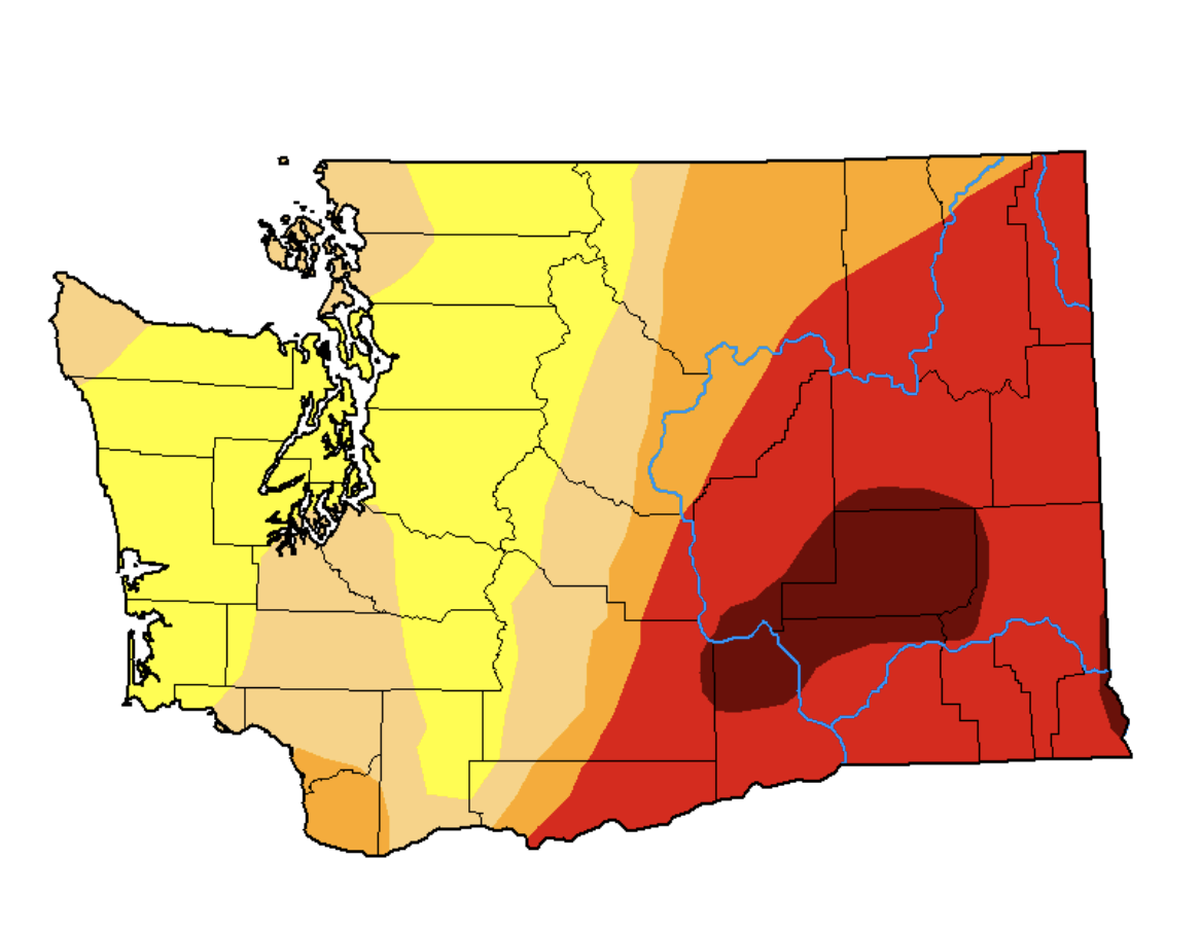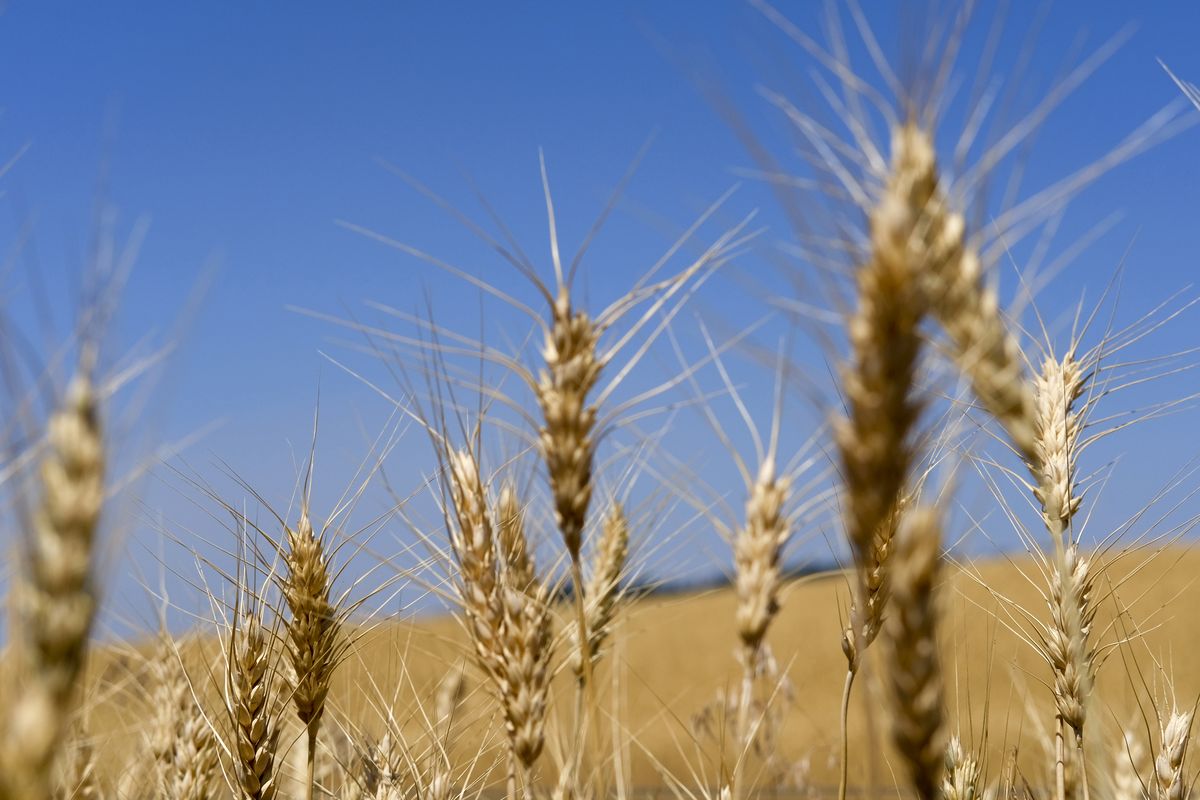Inslee issues emergency declaration as heat causes more Washington roads to buckle
Dry times (U.S. Drought Monitor)
Gov. Jay Inslee issued two emergency proclamations on Friday, one of which addressed new heat damage on roads and infrastructure caused by the record summer temperatures.
Proclamation 21-12 directs state agencies and departments to quickly coordinate and assist local departments to repair infrastructure damage done by the summer heat.
According to the Washington State Department of Transportation Twitter, an expansion joint concrete panel buckled on U.S. Highway 395 northbound on the bridge over the Little Spokane River on Friday.
They later posted that more of the concrete in the same area of U.S. 395 northbound buckled as well.
Crews addressed the damage and repairs were finished late Friday afternoon.
During the heat dome event in late June and early July, U.S. 195 near Colfax also buckled, and pavement started peeling off Route 20 east of Colville.
The proclamation noted that “unprecedented heat caused failures to concrete panels, bridge expansion joints, and asphalt, as well as electrical damage requiring repairs over a large geographic area.”
Estimated cost to repair roadway damage due to the heat was over $2.6 million, according to the proclamation.
Counties under state of emergency include Adams, Asotin, Clark, Cowlitz, Douglas, Ferry, Grant, King, Kittitas, Okanogan, Pacific, Pend Oreille, Pierce, Snohomish, Spokane, Whatcom, Whitman and Yakima .
Inslee also issued Proclamation 21-10.1, which amends the wildfire and burn ban to put greater restrictions on commercial truckers in the hopes of limiting interruptions of fuel distribution to firefighters at the numerous wildfires happening across the state.
The record heat has also contributed to unprecedented drought conditions in Eastern Washington.
The latest iteration of the U.S. Drought Monitor has put areas near Ritzville and Asotin under the most extreme level of drought, making it the first time in the history of the U.S. Drought Monitor that any area in Washington has reached that level of dryness.
The U.S. Drought Monitor uses four levels of extremity to track drought levels. Thursday’s drought readings show all of Washington under varying levels of drought, but this is the first time since the monitor was developed in 2000 that any area in Washington has reached “exceptional drought.”
Chuck Whitman, District 3 commissioner for Asotin County, said drought and heat conditions this bad in his county are new.
“It gets real dry here, but these consecutive days of high temperatures with it? It’s unusual,” Whitman said.
Since mid-February, Eastern Washington has seen a record dry spell. Spokane has received around 2 inches of rain since February and was even more dried out by the record heat dome in mid-June, according to the National Weather Service Office in Spokane.
The new milestone in Ritzville and Asotin corresponds with drought levels getting worse across the state. Nearly all of Eastern Washington is under extreme drought.
It might not get much better anytime soon.
According to Jeremy Wolf, a meteorologist at NWS Spokane, other than a slight chance of thunderstorms on Tuesday, there is no prospect of significant precipitation in Eastern Washington through the end of July.
Wolf said that an area needs an extended period of precipitation to get out of a drought.
In mid-July last year, no areas of Washington were under extreme or exceptional drought. This year, nearly half of Washington is under extreme or exceptional drought.
The U.S. Drought Monitor lists historic state impacts of extreme drought, including low crop yields, reduced tourism, unprecedented wildfires, toxic algae blooms and low hydropower production.
No impacts of exceptional drought are listed in Washington, as it is unprecedented in the history of the U.S. Drought Monitor in the state.
Inslee declared a drought emergency for the vast majority of Washington on Wednesday, saying in a news conference that this is the “summer of climate change.”

